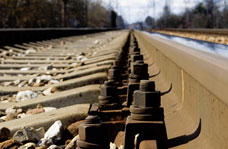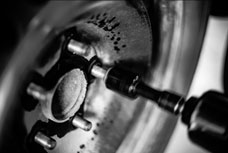How RPM Affects Torque Output
 Most of us have a general sense of how various tools, motors and components can work together to produce desired results. Fewer of us can explain the physics behind rotational speed, torque, and power. Here is some practical information about torque and how it relates to RPM (revolutions per minute).
Most of us have a general sense of how various tools, motors and components can work together to produce desired results. Fewer of us can explain the physics behind rotational speed, torque, and power. Here is some practical information about torque and how it relates to RPM (revolutions per minute).
What is Torque?
Torque occurs when a force causes an object to rotate about an axis or pivot. It essentially causes an object to twist as opposed to being pushed or pulled, which can also occur when force is applied. The degree of torque depends on the length or distance of the lever being used and how much force is actually applied.
Bolts rotate on an axis, and when we turn a bolt with a wrench or other tool, torque is a measurement of that turning force. Other examples include rotational forces applied to a shaft or axis causing it to turn – think of your car – or a drill bit that accelerates from rest. There are various mathematical equations that are used in the measurement of torque, but most of us don’t need to worry about those.
The length of the lever or arm used is especially important in generating torque. If you are trying to loosen a stuck bolt with a hand wrench, you know that a longer wrench makes the job easier. Holding the far end of a long wrench produces the best results. If you hold the wrench close to the bolt and use the same amount of effort, the bolt is less likely to turn.
To learn more, contact our team at Ultra Torq today!
Higher RPM and Torque

This is why torque and angle theory is used. Torque and angle states:
- A threshold torque for seating the nut (or bolt head)
- Then a prescribed number of degrees of extra turn, to attain final torque.
The basis of this theory is to target the tension in the fastener shank and provide the desired camp load. This comes closest to hydraulic tensioning. After seating the fastener, the number of degrees of turn will determine exactly how much more stretch is imparted to the shank of the fastener. The number of threads per inch, and therefore the ramp angle of the threads is known. For example:
- With 8 threads per inch on the fastener, each thread is .125” in height.
- By turning, for example, 180 degrees, the resultant shank stretch is ½ thread or .0625 inches.
- Since the tensile strength of the fastener is known, the clamp load imparted with .0625” stretch is a known amount.
An example is wind farm construction. The attachment of the blades to the hub, and the hub to the generator shaft, are critical joints. A typical application will have a bolt with 30mm shank diameter and threshold torque of 350 nm using a thread lubricant. The final torque is achieved with a further turn of 120 degrees.
Why Does Torque Matter?
Every bolt has an ideal torque for each fastening application. For threaded bolt fasteners, it means the difference between over-tightening or under-tightening, neither of which provides a secure connection. With under-tightening, parts may eventually loosen; over-tightening puts stress on the components and they will fail sooner than they should.
With the right tools, it is possible to be very precise in the amount of torque applied. Torque multipliers and bolting tensioners, working at the appropriate RPM, provide accurate and durable fastening for hydraulic, electric and pneumatic bolting applications. It’s a combination of torque and the appropriate RPM that provides the best connection.
To determine the right tool for your bolting needs, or any other application with tubes or pipes, contact the experts at Ultra Torq today.


